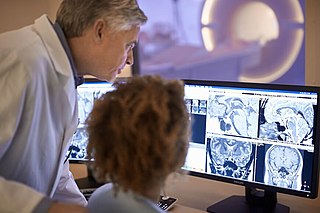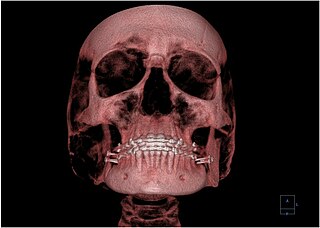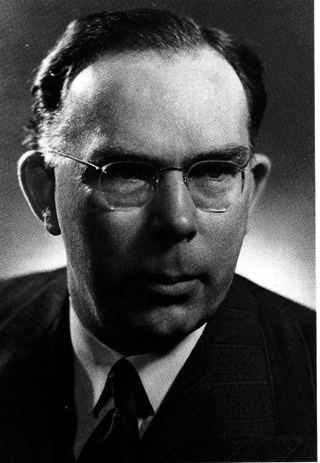
Anatomical pathology (Commonwealth) or anatomic pathology (U.S.) is a medical specialty that is concerned with the diagnosis of disease based on the macroscopic, microscopic, biochemical, immunologic and molecular examination of organs and tissues. Over the 20th century, surgical pathology has evolved tremendously: from historical examination of whole bodies (autopsy) to a more modernized practice, centered on the diagnosis and prognosis of cancer to guide treatment decision-making in oncology. Its modern founder was the Italian scientist Giovan Battista Morgagni from Forlì.

Radiology is the medical specialty that uses medical imaging to diagnose diseases and guide their treatment, within the bodies of humans and other animals. It began with radiography, but today it includes all imaging modalities, including those that use no electromagnetic radiation, as well as others that do, such as computed tomography (CT), fluoroscopy, and nuclear medicine including positron emission tomography (PET). Interventional radiology is the performance of usually minimally invasive medical procedures with the guidance of imaging technologies such as those mentioned above.
A radiation oncologist is a specialist physician who uses ionizing radiation in the treatment of cancer. Radiation oncology is one of the three primary specialties, the other two being surgical and medical oncology, involved in the treatment of cancer. Radiation can be given as a curative modality, either alone or in combination with surgery and/or chemotherapy. It may also be used palliatively, to relieve symptoms in patients with incurable cancers. A radiation oncologist may also use radiation to treat some benign diseases, including benign tumors. In some countries, radiotherapy and chemotherapy are controlled by a single oncologist who is a "clinical oncologist". Radiation oncologists work closely with other physicians such as surgical oncologists, interventional radiologists, internal medicine subspecialists, and medical oncologists, as well as medical physicists and technicians as part of the multi-disciplinary cancer team. Radiation oncologists undergo four years of oncology-specific training whereas oncologists who deliver chemotherapy have two years of additional training in cancer care during fellowship after internal medicine residency in the United States.

Residency or postgraduate training is a stage of graduate medical education. It refers to a qualified physician, veterinarian, dentist, podiatrist (DPM) or pharmacist (PharmD) who practices medicine, veterinary medicine, dentistry, podiatry, or clinical pharmacy, respectively, usually in a hospital or clinic, under the direct or indirect supervision of a senior medical clinician registered in that specialty such as an attending physician or consultant. In many jurisdictions, successful completion of such training is a requirement in order to obtain an unrestricted license to practice medicine, and in particular a license to practice a chosen specialty. In the meantime, they practice "on" the license of their supervising physician. An individual engaged in such training may be referred to as a resident, registrar or trainee depending on the jurisdiction. Residency training may be followed by fellowship or sub-specialty training.
The Royal Australian and New Zealand College of Radiologists (RANZCR) is the leading professional organisation for the promotion of the science and practice of the medical specialties of clinical radiology and radiation oncology in Australia and New Zealand. The college has members throughout the world. RANZCR provides the educational curricula for medical graduates training to enter the specialties.
A number of professional degrees in dentistry are offered by dental schools in various countries around the world.
A medical specialty is a branch of medical practice that is focused on a defined group of patients, diseases, skills, or philosophy. Examples include those branches of medicine that deal exclusively with children (paediatrics), cancer (oncology), laboratory medicine (pathology), or primary care. After completing medical school or other basic training, physicians or surgeons and other clinicians usually further their medical education in a specific specialty of medicine by completing a multiple-year residency to become a specialist.
The Primary FRCA is a postgraduate examination in anaesthesia, more fully called the Primary Examination of the Diploma of Fellowship of the British Royal College of Anaesthetists (RCoA).
Modern medical education in Hong Kong started with the founding of the Hong Kong College of Medicine for Chinese in 1887. Currently, six institutes of higher education are engaged in the training of medical practitioners in Hong Kong.

The Society of Radiographers (SoR) is a professional body and trade union that represents more than 90 percent of the diagnostic and therapeutic radiographers in the United Kingdom. The College of Radiographers (CoR) is a charitable subsidiary of the Society, they are collectively known as the Society and College of Radiographers (SCoR).
Fellow of the Royal Australasian College of Physicians, abbreviated as the post-nominal initials FRACP, is a recognition of the completion of the prescribed postgraduate specialist training programme in internal adult or internal paediatric medicine of the Royal Australasian College of Physicians.

Oral and maxillofacial radiology, also known as dental and maxillofacial radiology, is the specialty of dentistry concerned with performance and interpretation of diagnostic imaging used for examining the craniofacial, dental and adjacent structures.
Master of Medicine (MMed) is a postgraduate professional clinical degree awarded by medical schools to physicians following a period of instruction, supervised clinical rotations, and examination. The degree usually takes three years to complete, but may take up to four years in some countries. It is awarded by only medical subspecialties and usually includes a dissertation component.before enrollment in this program,medical graduate has to pass the entrance test. The degree may complement an existing fellowship in the chosen specialty or be the sole qualification necessary for registration as a specialist.
Professor Dame Janet Elizabeth Husband is Emeritus Professor of Radiology at the Institute of Cancer Research. She had a career in diagnostic radiology that spanned nearly 40 years, using scanning technology to diagnose, stage, and follow-up cancer. She continues to support medicine and research as a board member and advisor for various organisations.
The Basic Sciences Examination is run by the Royal Australasian College of Surgeons for surgical trainees who are in the Surgical Education and Training Program. The exam is conducted in February and June of every year for all surgical candidates, and is composed of written and clinical formats. Only candidates in a surgical training program in Australia or New Zealand can take part in the examinations.
Ann Barrett OBE, is Emeritus Professor of Oncology in the University of East Anglia, England, and formerly deputy dean of the School of Medicine and lead clinician for oncology at the Norfolk and Norwich University Hospital NHS Trust. She was awarded an OBE in 2010 for services to medicine. She is also a fellow of the Royal College of Surgeons in Ireland.

Surgeon Rear Admiral Lionel John Jarvis, CBE, KStJ, QHS, FRCR, DL is a British consultant radiologist. He was previously the Surgeon General of the Royal Navy and the Assistant Chief of the Defence Staff for Health. He served as the Royal Navy's Chief Medical Officer and Medical Director General (Naval) until April 2012. He was appointed as an Honorary Surgeon to the Queen (QHS) in 2006. He was both the Prior of England and the Islands of the Most Venerable Order of the Hospital of Saint John of Jerusalem and the Chair of St John Ambulance from 2016 to 2021.
Christopher M. Nutting is a British Professor of Clinical Oncology and medical consultant, specializing in head and neck cancers, who has helped develop Intensity-Modulated Radiotherapy (IMRT), an advanced form of Radiation therapy.

James Ralston Kennedy "RP" Paterson, CBE, MC, MD, FRCSEd, FRCR, DMRE (Cantab) was a radiologist and oncologist in Scotland. Along with Herbert Parker, pioneered the development of the Paterson-Parker rules for the Radium Dosage System also known as the Manchester system.
Keith Edward Halnan was a British oncologist and researcher in radiotherapy.







